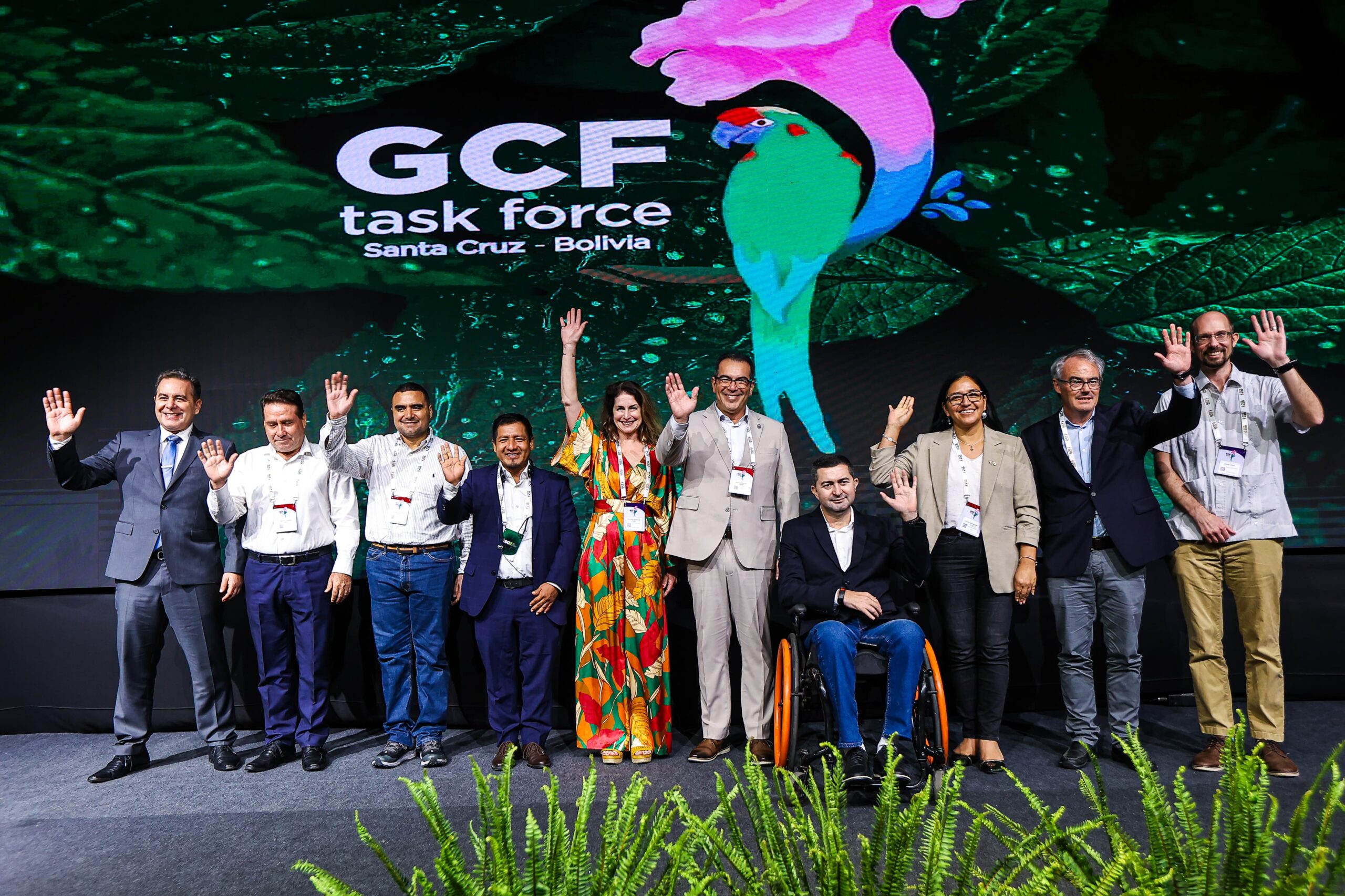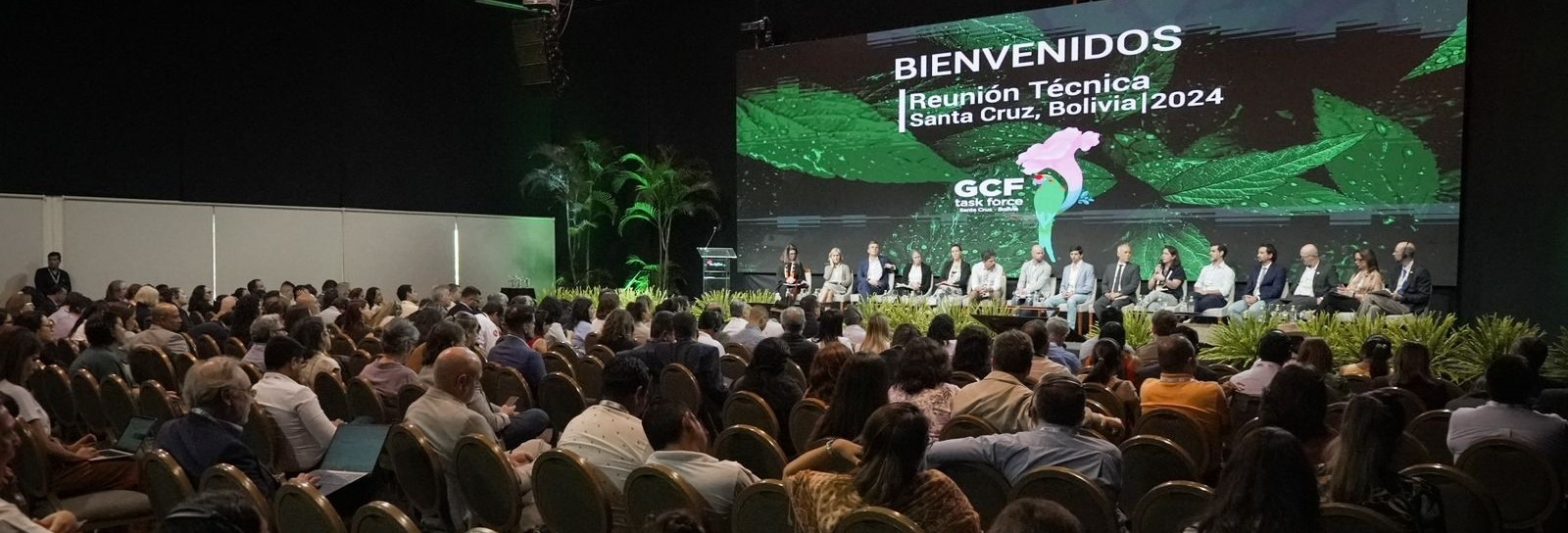Last week, the Governors’ Climate and Forests Task Force (GCF Task Force) concluded an important and productive technical exchange in Santa Cruz de la Sierra, Bolivia. Held in close collaboration with our host governments of Santa Cruz, Pando, and Tarija (three of our newest member governments), along with co-organizer Fundacion Natura Bolivia, the event brought together key stakeholders to delve into how to create a just, sustainable New Forest Economy that protects forests and creates livelihoods and economic opportunities for GCF Task Force member jurisdictions, Indigenous Peoples, and local communities. The exchange builds on the launch of our Call-to-Action to Finance the New Forest Economy from COP28 at the end of last year.
The Santa Cruz meeting, held from April 23 to April 26, 2024, was a vibrant space for knowledge exchange and discussion. Throughout the week, close to 400 participants – including government representatives, indigenous peoples’ organizations, donors, and private sector actors – engaged in a series of panel discussions, in-depth working groups, and plenary presentations focused on the various pillars of a New Forest Economy and its role in achieving climate finance goals.
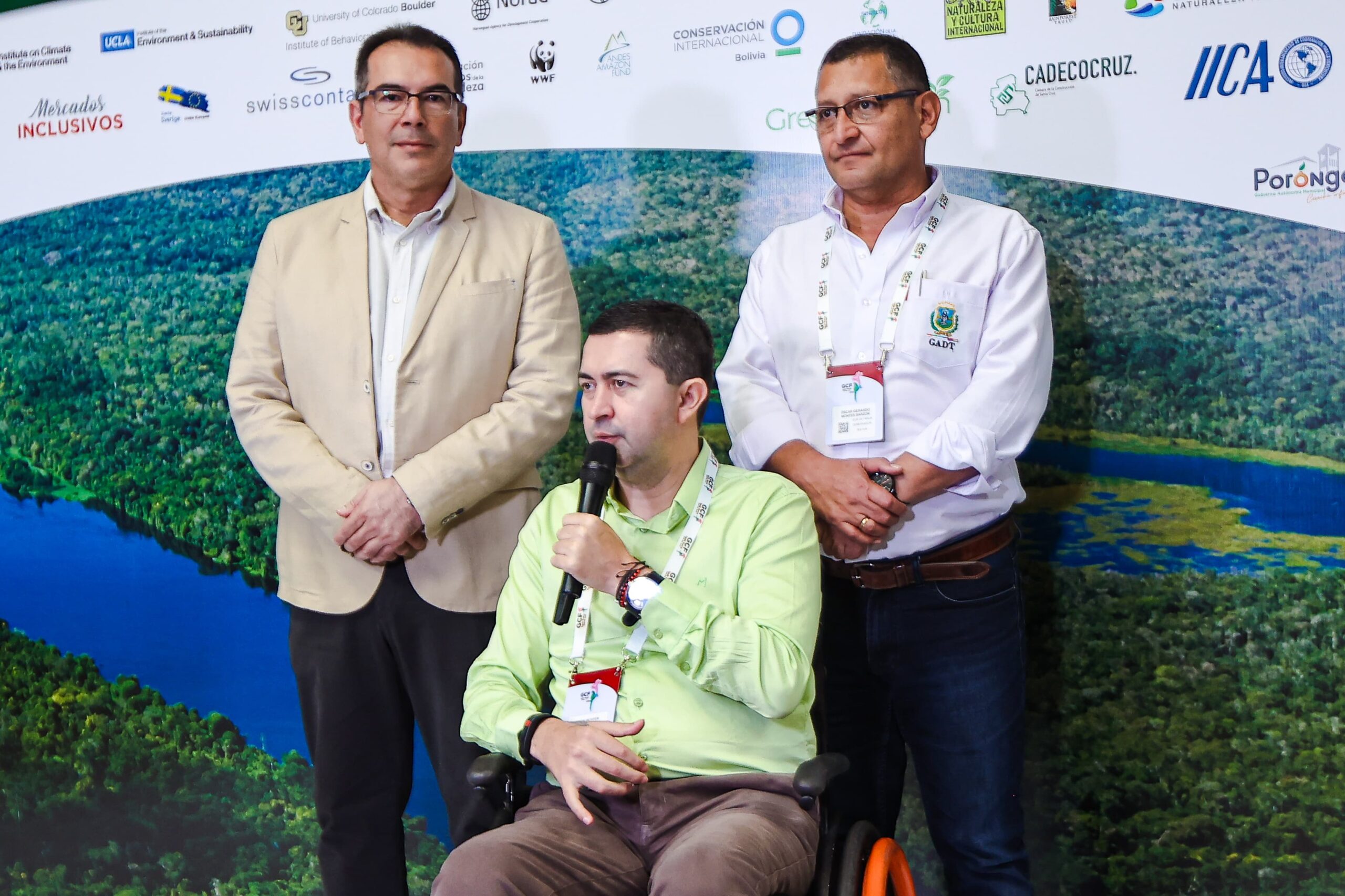
Governors Mario Aguilera (Santa Cruz), Dr. Regis Richter (Pando), and Óscar Montes (Tarija)
The purpose of this exchange was to challenge participants to take off their institutional hats and to dig into how to co-design funding mechanisms – through existing mechanisms and possibly new ones – together with funders, governments, communities, and the private sector to more rapidly mobilize agile financing that helps derisk investments in action within GCF Task Force jurisdictions to end deforestation, build sustainable economic development opportunities for communities, and attract longer-term investment for a New Forest Economy.
Engaging with Governors and Indigenous Leaders
We organized several preliminary meetings on April 23, including a preparatory meeting with our Governors and a technical exchange of the Global Committee of Indigenous Peoples and Local Communities.
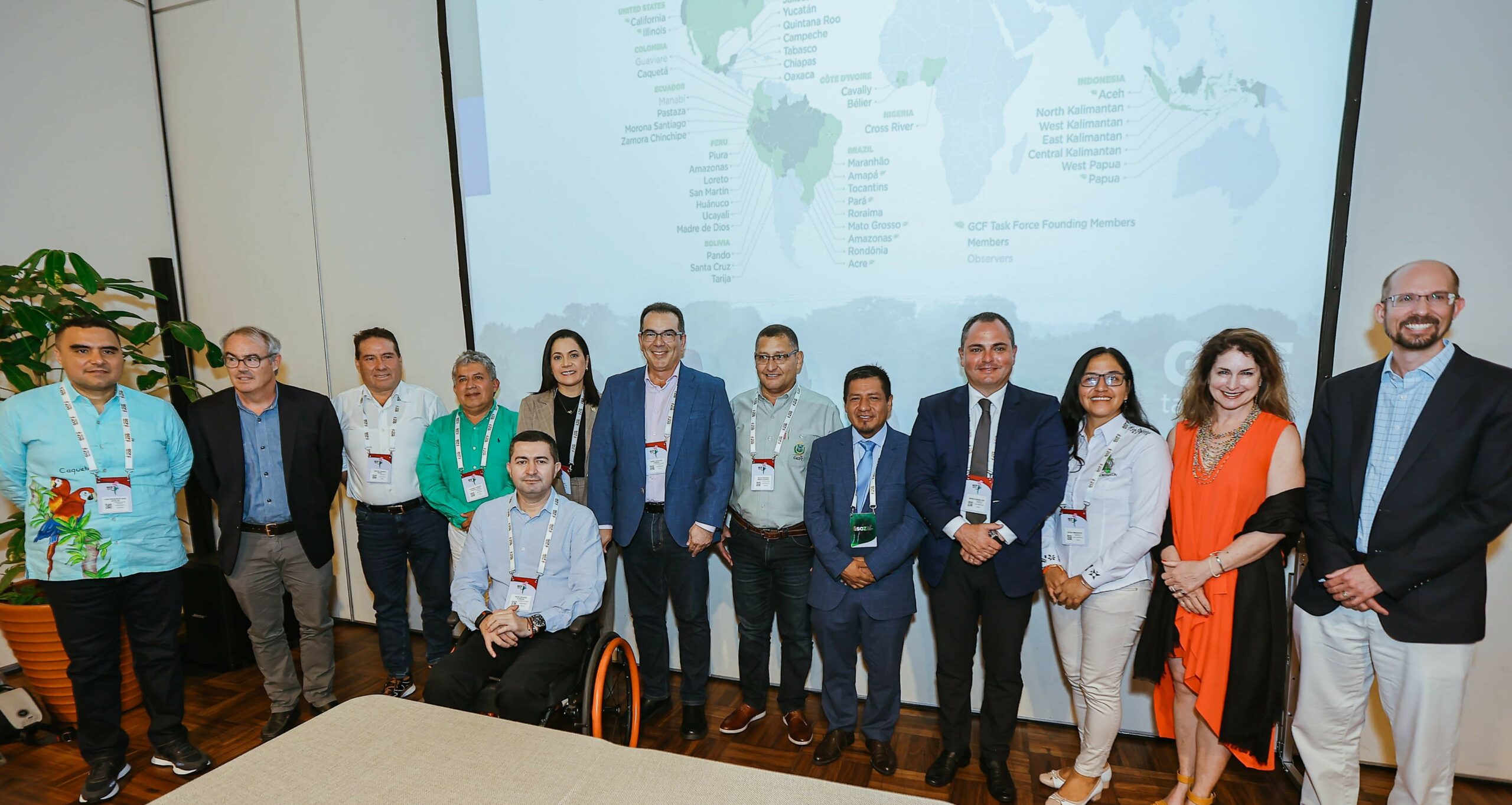
Governors of Pando, Santa Cruz, and Tarija (Bolivia); Caqueta (Colombia); and Huanuco, Loreto, and Ucayali (Peru); together with Vice Governors of Acre and Rondonia (Brazil) and Amazonas (Peru), and GCF Task Force Global Secretariat
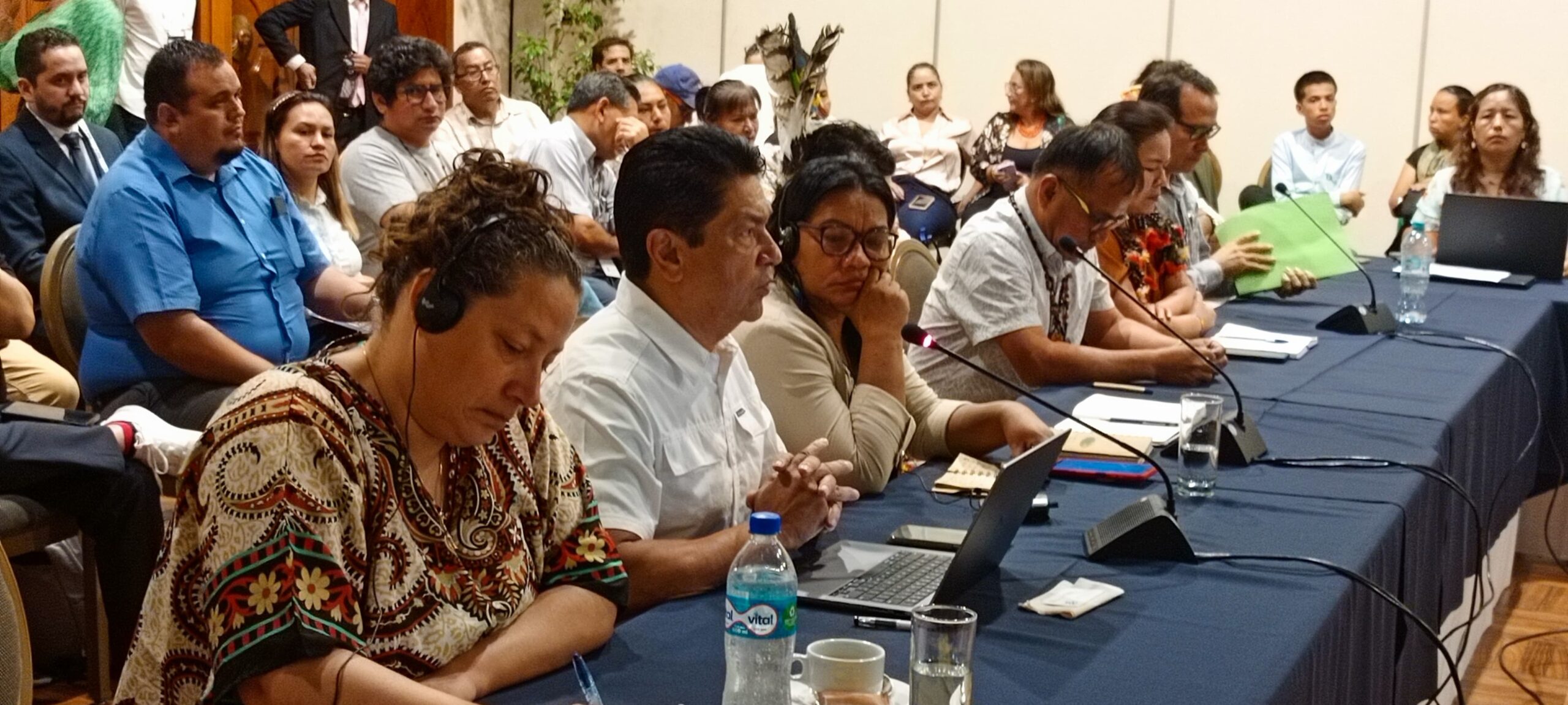
Global Committee of Indigenous Peoples and Local Communities Executive Leadership Group
These pre-meetings also included an important new opportunity for Governors to engage with the Amazonia+ program, which is an European Union funded program to strengthen capacity across the Amazon basin to mitigate CO2 emissions, adapt to climate change, reduce deforestation and protect biodiversity. One of its key focus areas is on the development and implementation of environmental and forest governance policies and mechanisms, with the active participation of local communities and indigenous peoples in the Amazon basin.
In an opening press conference, Mario Aguilera, Governor of Santa Cruz, highlighted the major theme of the exchange – the vital need for partnering with GCF Task Force member jurisdictions – stating:
We are here to create a New Forest Economy, an inescapable and undeniable necessity. This will result from our discussions and exchange of experiences, but more broadly, from including the voices of local actors and subnational governments. To combat deforestation, wildfires, and climate change, the world needs subnational governments… Unity gives us force!
Governors Panel to Launch the Meeting
Governor Aguilera and Project Lead William Boyd, together with Giliana Etacore Chiqueno, an Indigenous Leader from the Ayoreo People and Departmental Legislative Assemblymember, welcomed the broader public on April 24 and described the purpose of the exchange and the work that needed to occur throughout the week. This was followed by an opening panel featuring the 7 governors and 3 vice governors discussing their realities, needs, and shovel-ready funding opportunities for investors to partner more closely with subnational governments. The Governors presented clear visions that are ready for partnerships. This opening panel was expertly moderated by GCF Task Force Peru Director Fabiola Munoz.
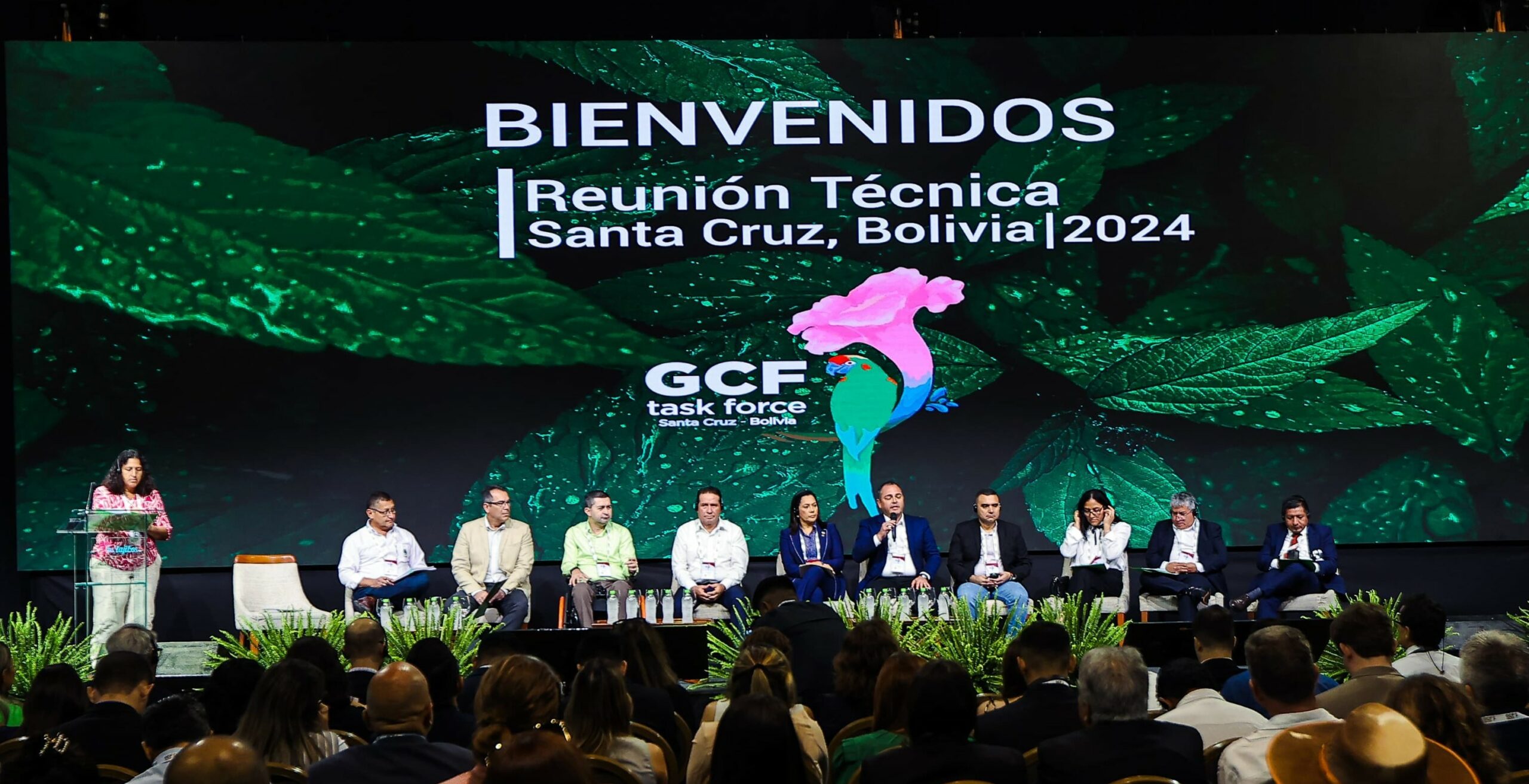
Setting the Stage: Financing the New Forest Economy
The second portion of the opening session kicked off with a high-powered panel discussion moderated by GCF Task Force Project Directors Colleen Scanlan Lyons and Jason Gray. The panelists – representing donors and funders – explored the opportunities and challenges associated with financing the New Forest Economy within member jurisdictions. The discussion shed light on critical considerations such as risk mitigation strategies, innovative financing mechanisms, and the importance of ensuring alignment with broader climate finance objectives. Represented on stage were national donor governments like Norway, the United States, the United Kingdom, the European Union, and Germany; multilateral partners and country-specific investment banks like the InterAmerican Development Bank, Global Environmental Facility, the United Nations Development Program, Sustainable Environmental Investment Fund of Ecuador; venture capital firm KTPL; and philanthropy like Andes Amazon Fund, Climate and Land Use Alliance, and re:wild.
The key message from this panel was that donor partners are looking for clear visions from governments, communities, and companies to support through their various funding mechanisms. The GCF Task Force jurisdictions and Indigenous leaders present throughout the meeting were ready to present their clear visions and investable opportunities that exist now!
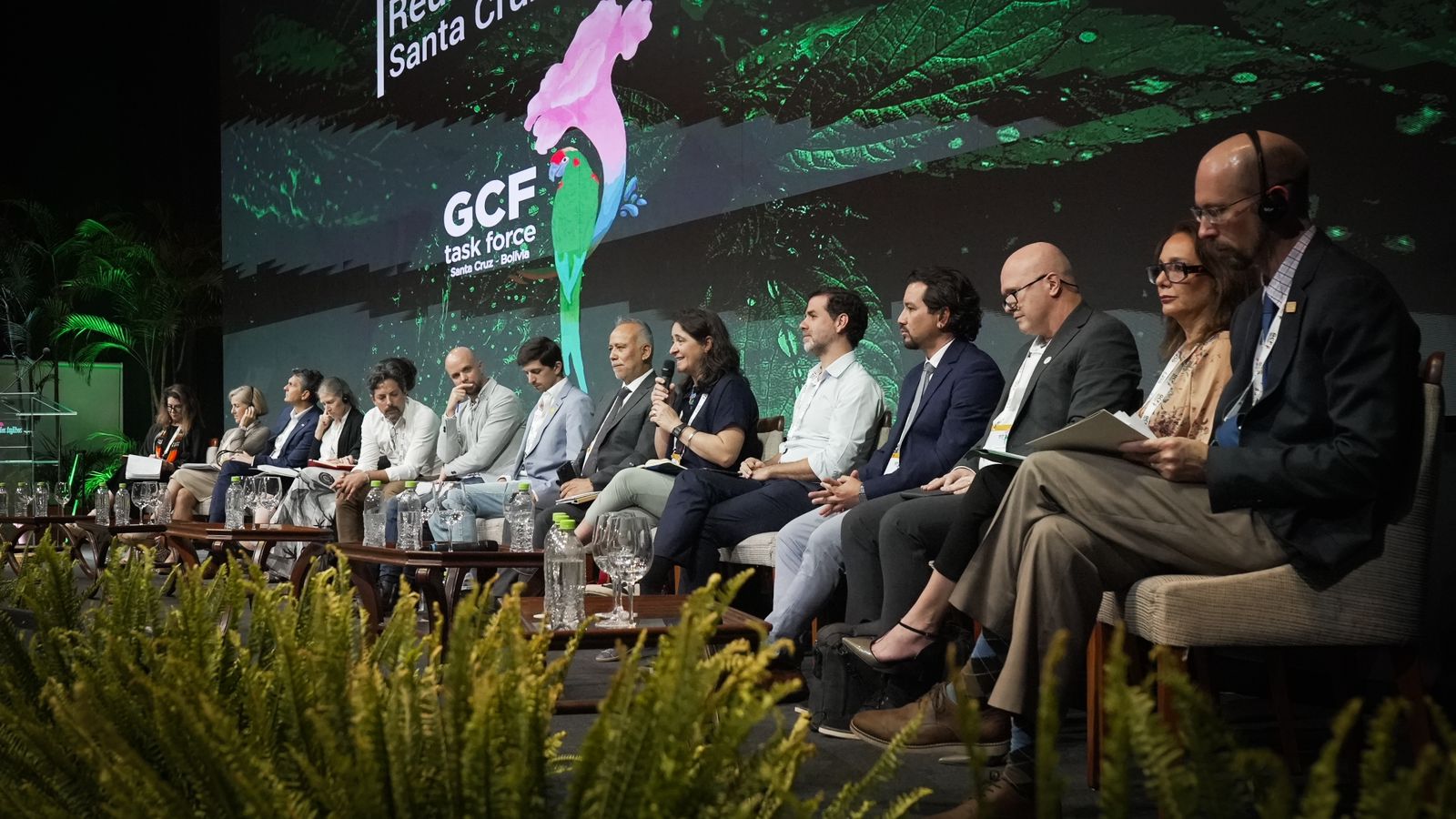
Deep Dives: Exploring the Pillars of a New Forest Economy
Following the opening session, the meeting delved deeper into the core elements of a New Forest Economy through dedicated panels sessions. Each session explored a specific pillar of the GCF Task Force’s Manaus Action Plan (or MAP) to building the New Forest Economy. These panels provided the audience with a comprehensive understanding of tackling the deforestation, climate, biodiversity, and poverty crises through a multifaceted approach at jurisdiction scale. Below are a few highlights from the panels. (The full agenda is available here.)
- Climate Finance: The need for climate finance – and several of the ways in which finance is supporting specific projects and processes in our member jurisdictions were discussed during the panel sessions. The main takeaway here was the urgent sense of need to reform existing finance mechanisms to become more flexible and efficient. One of the participants noted:
“It is key to reform the existing climate financing mechanisms so they incorporate communities and jurisdictions to become more flexible and actually contribute to the greatest challenge of our network – to foster inclusive development while protecting standing forests.”
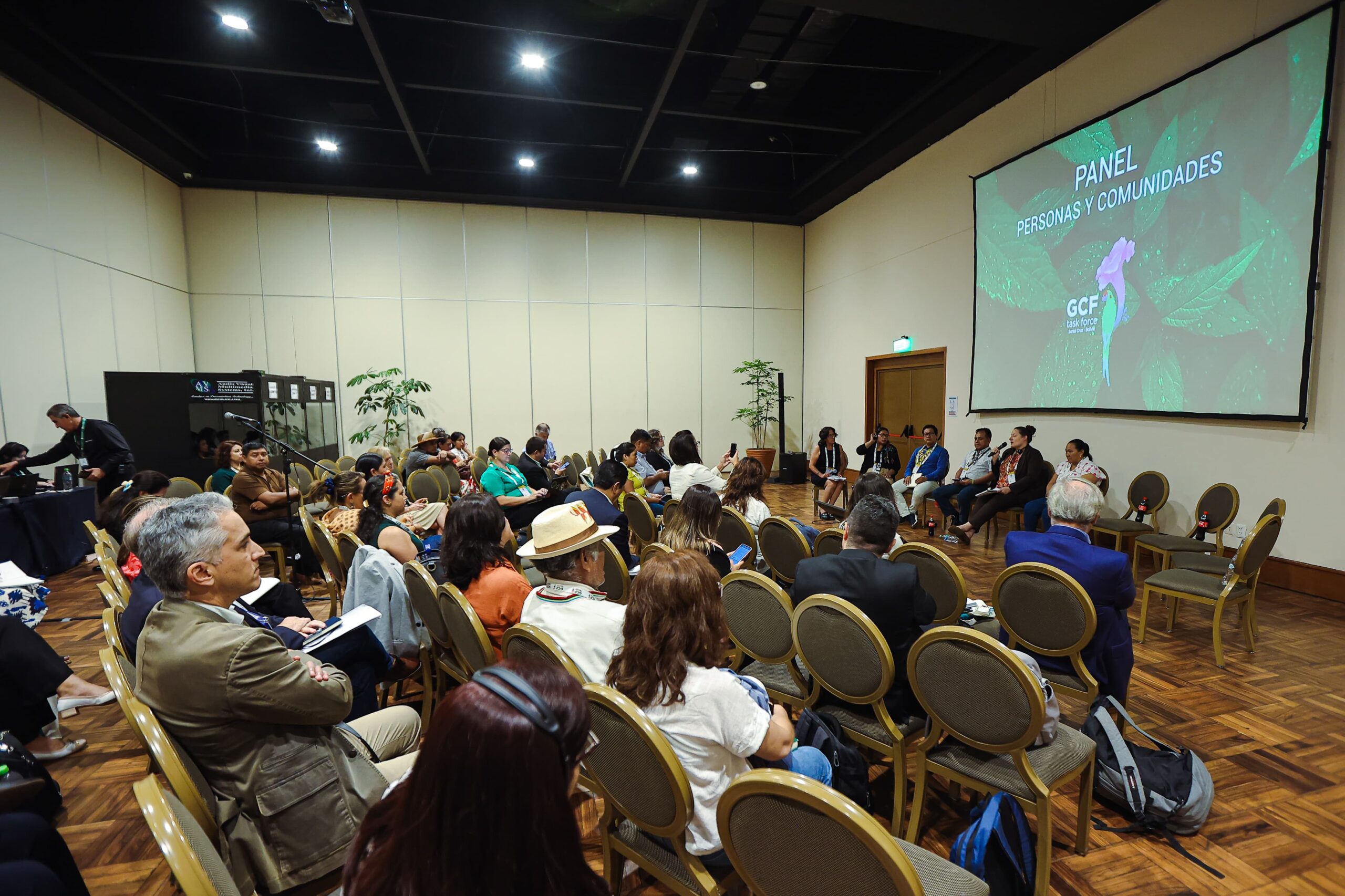
Panel 1a: What Do Authentic Global IPLC and Governmental Partnerships Look Like? Perspectives from around the World about participation, transparency and trust
- Sustainable Forest Management: Discussions focused on practices that promote healthy and resilient forests while generating economic benefits for local communities. Participants exchanged ideas on responsible logging practices, forest restoration initiatives, and the integration of traditional ecological knowledge into forest management plans.
- Forest Product Value Chains: Sessions explored ways to enhance the value of forest products by promoting sustainable harvesting techniques, supporting the development of non-timber forest products (NTFPs), and fostering the growth of green markets. Examples included discussions on sustainable cocoa production, indigenous handicrafts, and the potential for biochar production as a source of renewable energy.
- Landscape Governance: Recognizing the importance of strong governance frameworks, sessions examined strategies for promoting collaborative landscape management that ensures the equitable distribution of benefits and protects the rights of indigenous peoples and local communities.
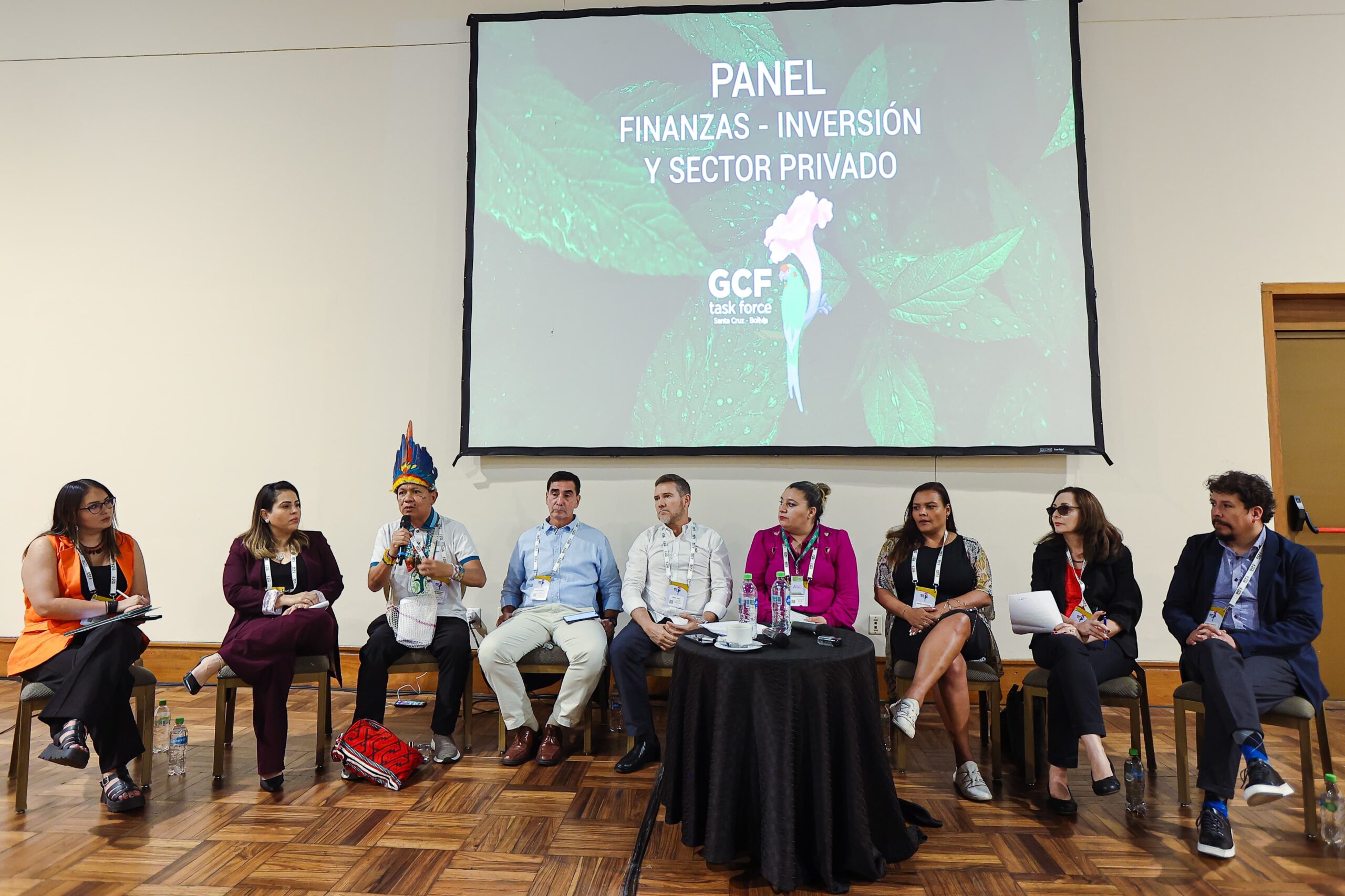
Panel 2a: Improving Access to Climate Finance: Examples for the New Forest Economy
Co-Designing Partnerships for a Sustainable Future
On April 25, participants split into “design charette” working groups, based in part on similarities in their territorial realities. Jurisdictions with high rates of commodity-driven deforestation were paired together in one working group to exchange on their specific drivers of deforestation, as well as dig deeper into what level and types of financing would help them derisk broader scale investment into new types of agricultural and non-agricultural production, more sustainable economic enterprises, and shovel-ready opportunities for funders and investors to support. These “governments + communities” working groups also included one for the Peruvian Commonwealth for the Regional Amazon along with the Grupo Peru of Indigenous Peoples; a working group made up of jurisdictions with high forest cover but high threat of deforestation; and a working group comprised of the transborder region of Acre (Brazil), Madre de Dios (Peru), and Pando (Bolivia). Indigenous leaders and community members from within these jurisdictions were also full participants in the working groups.
Partners – funders, NGOs, academia, private sector, and national government representatives – were paired into a 5th working group, the Partners Roundtable. This group was charged with trying to think beyond their specific institutional constraints to engage on how funders can modify existing mechanisms – or create new ones – that allow for more rapid disbursement of funds, to more quickly and at larger scale support the transformation of tropical forest economies.
Each of these working groups came up with visions for how to advance and presented those during an open plenary in the afternoon. Then, the partners roundtable participants joined each of the 4 governments + communities groups to start the co-design process for the New Forest Economy. While this work is harder said-than-done, the Santa Cruz exchange advanced the ideas and will be built on for the GCF Task Force Annual Meeting in Ucayali, Peru in October 2024.
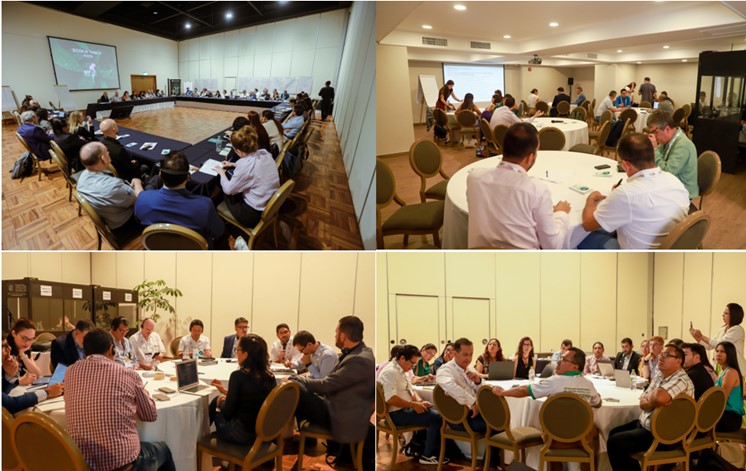
Charette Working Groups in Action
Looking Forward: Building on the Momentum
The Santa Cruz technical exchange concluded with a renewed sense of optimism and commitment to advancing the New Forest Economy agenda in Bolivia and beyond. Participants left the event equipped with valuable resources, actionable strategies, and a network of connections to support their efforts in implementing a New Forest Economy approach within their respective jurisdictions. We will be compiling all of the discussions from the design charettes into a blueprint of sorts for advancing the New Forest Economy at our meeting in Peru.
Thank you, Santa Cruz!
The GCF Task Force would like to express its sincere gratitude to the departmental governments of Pando, Tarija, and Santa Cruz for their invaluable collaboration in hosting this successful event. In particular, Acting Governor Mario Aguilera and his team undertook a herculean effort to ensure the success of the meeting. We would also like to thank our key supporters, in particular the Government of Norway, who made the meeting happen.
We look forward to continuing to support our member jurisdictions as they explore the immense potential of a New Forest Economy for a more sustainable and equitable future. This momentum will be carried forward to the upcoming GCF Task Force Annual Meeting to be held in Ucayali, Peru.
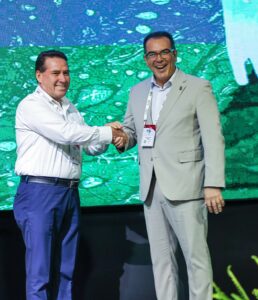
Governor Aguilera Hands Off to Governor Gambini (Ucayali, Peru)
The Santa Cruz meeting has generated significant interest and enthusiasm for the New Forest Economy, and this will continue to be our primary focus for the Annual Meeting later this year. We look forward to even more productive discussions and collaboration as we work together to co-design a future where forests are valued and protected.
